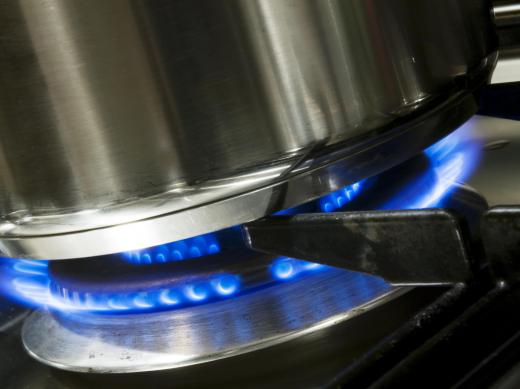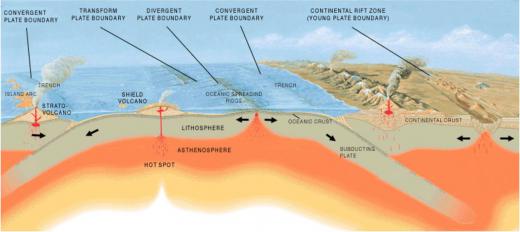What Is Convection Cooling?
Convection cooling is any transfer of heat that occurs from a movement of fluid. Both liquids and gases can exhibit convection cooling, and the effect can be natural or forced. Natural cooling occurs from heat transfer due to changes in density of the fluid, such as hot air rising and cooler air sinking. Forced convection occurs when any external force is added to move the fluid, such as a fan moving air or a spoon stirring a liquid.
Heat transfer occurs primarily from conduction and convection. Conduction is a transfer of heat through any material, without movement of the material. An example of conduction is a metal pan heated by a flame on a gas stove. The gas flame heats the underside of the pan, and conduction will transfer the heat to the remainder of the pan. When the heat is turned off, convection will cool the pan as heat transfers and rises above to the air around the pan.

Natural convection cooling occurs in the Earth's atmosphere and oceans. Air is heated by the warming of the land and rises. As air rises, it cools and returns to the surface, creating global air circulation and weather patterns. Ocean currents carry warm water to cooler oceans and cooler water sinks and moves to the warmer regions. Sunlight adds energy by warming the air or water, and rotation of the Earth imparts some energy, but the movement is considered natural rather than forced.

Convection cooling occurs inside the Earth as well. The molten core, heated by decay of radioactive elements, rises toward the outer crust of our planet. Convection cools the molten core material and it slowly moves back to the center. This movement causes our continents to slowly move on top of the molten core, a phenomenon called tectonic plate movement.
Forced cooling is common in homes and businesses. Air conditioning and heating systems used forced air convection to move heat in or out of a building. Fans inside electronic equipment used forced convection cooling to move air over electronic components. Refrigeration systems use fans both to remove heat from the condenser coils, but also to cool the compressor and move air inside the refrigerated compartment.
Cooling fans have demonstrated convection effects for centuries. With the invention of electricity, electric motors could be used to drive tabletop and ceiling fans. Sophisticated ceiling fans containing thermostats to automatically control their functions have been available since the late 20th century. All rely on the same principle of cooling the human body by moving air across the skin.
Convection can be combined with evaporation to improve cooling performance. Evaporative cooling systems, which use forced air passed through a wet evaporation pad to cool interior spaces, are popular in areas of very low humidity. These systems cool the interior space by removing heat from the incoming air through evaporation. The resulting air stream is cooler, but contains more moisture. Evaporative systems do not work well in areas of higher relative humidity, because cooling will not occur and the interior may become quite damp.
AS FEATURED ON:
AS FEATURED ON:












Discuss this Article
Post your comments